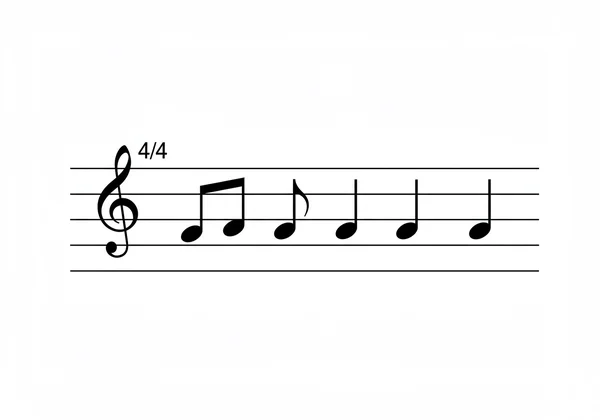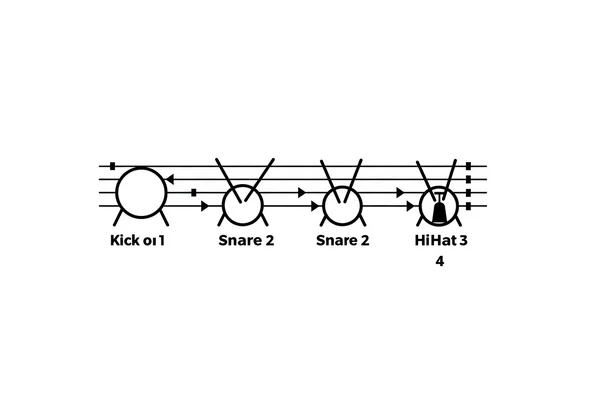Virtual Drums: Master Basic Rhythm & Time Signatures
Dreaming of drumming but put off by expensive kits or noisy practice? Good news! Virtual drums are here to unleash your inner rhythm—no gear, no noise, just pure fun and learning. Wondering if you can learn drums online effectively? Get ready for a resounding YES! This guide dives into the absolute basics: basic rhythm and time signatures, turning your keyboard into a powerful drum set. Let's make some noise (the good kind!) and start your rhythmic adventure. Play online drums and feel the beat!
Understanding Time Signatures: Your Rhythmic Blueprint
Before you lay down your first beat, it’s crucial to understand the time signatures that govern music. Think of a time signature as the musical equivalent of a blueprint, telling you how many beats are in each measure and what kind of note gets one beat. Mastering this concept is like learning the alphabet before writing a novel; it’s fundamental to all drumming.
What is a Time Signature? Decoding 4/4 Beat
A time signature is typically written as two numbers stacked on top of each other, like a fraction, at the beginning of a piece of music. The top number tells you how many beats are in each measure (or bar), and the bottom number indicates which type of note receives one beat. For drummers, the most common time signature you’ll encounter is the 4/4 beat.
In a 4/4 beat:
- The top '4' means there are four beats in each measure.
- The bottom '4' means a quarter note gets one beat.
This time signature is prevalent in rock, pop, jazz, and countless other genres because it feels natural and provides a solid foundation for most grooves. Understanding this rhythmic blueprint is your first step towards building compelling drum patterns.

Feeling the Pulse: Counting Beats and Measures
Knowing the theory is one thing; feeling the pulse is another. To truly understand basic rhythm, you need to internalize the count. In 4/4 time, we typically count "1, 2, 3, 4" for each measure. Try tapping your foot and counting along:
- Start tapping a steady pulse with your foot.
- Count "1, 2, 3, 4" out loud, making sure each number aligns with a tap.
- Once you reach "4," immediately start again from "1" for the next measure.
This consistent internal pulse is what allows drummers to keep time and lock into a groove. It's the bedrock for all your drumming, whether you're creating a simple beat or tackling complex drum fills. Practice counting until it feels completely natural.
Basic Rhythm: Building Blocks for Your First Beat
Now that you understand time signatures and counting, let’s talk about the notes and rests that form your basic rhythm. Just like words are made of letters, rhythms are made of notes and rests, each with a specific duration.
Notes and Rests: Whole, Half, and Quarter Notes Explained
Understanding note values is essential for building any beat. Here are the foundational ones you'll need:
- Whole Note: Lasts for four beats in 4/4 time. Imagine hitting a cymbal and letting it ring for the entire "1, 2, 3, 4" count.
- Half Note: Lasts for two beats. You would play it on beat "1" and let it ring through beat "2."
- Quarter Note: Lasts for one beat. This is your fundamental pulse; you play a quarter note precisely on each count of "1, 2, 3, 4."
Rests correspond directly to note values, indicating silence for that specific duration. For instance, a quarter rest means one beat of silence. By combining these notes and rests, you can create endless rhythmic possibilities. This is how you develop complex online drum kit patterns.
Practice Basic Rhythm on Virtual Drums: Your Keyboard is Your Kit!
This is where the fun begins! This virtual drum set offers an intuitive platform where your keyboard is your kit. You can instantly apply what you’ve learned about note values and counting. Our platform maps different drum pieces (kick, snare, hi-hat, cymbals) to specific keyboard keys, making keyboard drumming incredibly accessible.
Head over to the site and locate the "Show Key" button. This will display the corresponding keyboard key for each drum piece. Start by just hitting the kick drum (often mapped to 'x') or the hi-hat (often mapped to 'h' or 'j') on each beat, aiming for a steady quarter note pulse. Experiment with half notes on the snare or whole notes on a cymbal. There’s no pressure, just pure rhythmic exploration! Ready to start? Try our free tool today and feel the beat.

Putting it Together: Your First Simple Drum Beats
With a grasp of time signatures and note values, you're now ready to combine them into actual drum beats. This is where your virtual drum set truly comes alive! You’ll discover how different drum sounds interact to create a groove.
The Classic "Boom-Chik-Boom-Chik" (Rock Beat)
Let's build the most fundamental rock beat, often called the "boom-chik-boom-chik" or "money beat." This simple drum beat is the backbone of countless songs and is perfect for beginners. In 4/4 time, here's how it breaks down:
- Beat 1: Kick drum (Boom!)
- Beat 2: Snare drum (Chik!)
- Beat 3: Kick drum (Boom!)
- Beat 4: Snare drum (Chik!)
Simultaneously, you'll play the hi-hat on every beat (1, 2, 3, 4) in quarter notes.
On our platform, this might translate to:
- Kick Drum: 'x'
- Snare Drum: 'c'
- Hi-Hat: 'h' or 'j'
Practice slowly: "x (hi-hat), c (hi-hat), x (hi-hat), c (hi-hat)." Focus on the steady hi-hat pulse and making your kick and snare hits precise. This rock beat is your gateway to countless musical possibilities.

Experimenting with Basic Variations on Your Virtual Drum Set
Once you're comfortable with the classic rock beat, your virtual drum set offers endless possibilities for variation. Try these simple tweaks:
- Add another kick: On beat 3 and the "and" of beat 3, creating a "Boom-Chik-Boom-boom-Chik" feel.
- Open the hi-hat: On beat 2 or 4, giving the beat more sizzle. On our virtual drums, this is typically mapped to a different key than the closed hi-hat.
- Ghost notes: Lightly tap the snare drum between the main beats to add texture.
These small changes can dramatically alter the feel of a beat. Don't be afraid to experiment! The beauty of an online drum kit like ours is that you can try anything without the noise or equipment limitations of a physical set. It’s a fantastic drum simulator for creative exploration.
Your Rhythmic Journey Begins Here!
You've just smashed through the first few steps of drumming, mastering basic rhythm and time signatures! From decoding that essential 4/4 beat to nailing your first "Boom-Chik-Boom-Chik" groove, you've now got the tools to create amazing rhythms. The best part? Your drumming journey is just getting started, and you can keep exploring right from your browser, anytime, anywhere. Our free and intuitive online drums platform is here for aspiring beginners, casual rhythm gamers, and even seasoned musicians. So, dive back in, experiment with new beats, and let the sheer joy of drumming take over! We can't wait to hear the incredible rhythms you create. Start drumming now!
Frequently Asked Questions About Learning Drums Online
How to play drums on a computer keyboard?
Playing virtual drums on a computer keyboard is incredibly straightforward! Our platform maps different drum sounds (kick, snare, hi-hat, cymbals) to specific keys on your QWERTY keyboard. For example, 'x' might be your kick drum, 'c' your snare, and 'h' or 'j' your hi-hat. Simply press the corresponding keys to trigger the sounds. The website also features a "Show Key" button to display these mappings directly on the drum set for easy learning. It's a fantastic way to experience keyboard drumming without needing any special equipment.
Can you learn drums online effectively?
Yes, you absolutely can learn drums online effectively! While online tools can't replace the tactile experience of a physical drum set, platforms like this virtual drum set provide an excellent starting point for understanding rhythm, coordination, and basic drumming concepts. They allow you to practice basic rhythm and develop your timing in a low-pressure, accessible environment. Many professional drummers even use online resources for quick practice or to map out ideas. For aspiring drummers, it's an invaluable tool to build a strong foundation before investing in lessons or a physical kit.
Is it too late to learn drums as an adult?
It is never too late to learn drums! Music is a lifelong journey, and people of all ages successfully learn instruments. Learning drums, even as an adult, offers fantastic benefits like improved coordination, stress relief, and a boost in cognitive function. With accessible tools like a virtual drum set, you can start at your own pace without the common barriers of cost, space, or noise. Embrace the joy of rhythm, no matter your age! Unleash your inner drummer today.
How can I practice drums without a drum set?
Practicing drums without a physical drum set is precisely what online drums and drum simulator tools are designed for! Our platform provides a complete, free online drum kit that allows you to play and practice anytime, anywhere, using just your computer keyboard, mouse, or mobile device's touch screen. This solves common problems like noise complaints, limited space, and the high cost of equipment. It's the perfect solution for anyone wanting to develop their rhythmic skills and practice various simple drum beats without needing a traditional drum set.